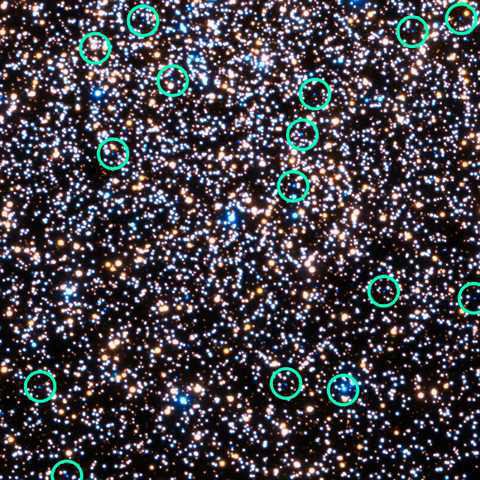BRITISH COLUMBIA, Canada For the first time, white dwarf stars have been photographed during the beginning stages of their 40-million-year migration, according to astronomers.
White dwarfs move away from the center of densely packed globular star clusters as they age and cool down. While astronomers have long known about the process, this is the first time it has been observed in action, according to the Space Telescope Science Institute.
"We've seen the final picture before: white dwarfs that have already sorted themselves out and are orbiting in a location outside the core that is appropriate for their mass," study author Jeremy Heyl said in a statement. But in this study, which comprises about a quarter of all the young white dwarfs in the cluster, we're actually catching the stars in the process of moving outward and segregating themselves according to mass.
Astronomers observed the white dwarfs movement within the globular star cluster 47 Tucanae, which contains hundreds of thousands of stars in the Milky Way galaxy, using images captured by the Hubble Telescope.
For the study, astronomers tracked about 3,000 white dwarfs using ultraviolet light. They divided the stars into two groups: white dwarfs starting the journey at about 6 million years old and white dwarfs that completed the journey at around 100 million years old.
The entire process doesn't take very long, only a few hundreds of millions of years, out of the 10-billion-year age of the cluster, for the white dwarfs to reach their new home in the outer suburbs, Heyl said.
The study was published in The Astrophysical Journal.
White dwarfs move away from the center of densely packed globular star clusters as they age and cool down. While astronomers have long known about the process, this is the first time it has been observed in action, according to the Space Telescope Science Institute.
"We've seen the final picture before: white dwarfs that have already sorted themselves out and are orbiting in a location outside the core that is appropriate for their mass," study author Jeremy Heyl said in a statement. But in this study, which comprises about a quarter of all the young white dwarfs in the cluster, we're actually catching the stars in the process of moving outward and segregating themselves according to mass.
Astronomers observed the white dwarfs movement within the globular star cluster 47 Tucanae, which contains hundreds of thousands of stars in the Milky Way galaxy, using images captured by the Hubble Telescope.
For the study, astronomers tracked about 3,000 white dwarfs using ultraviolet light. They divided the stars into two groups: white dwarfs starting the journey at about 6 million years old and white dwarfs that completed the journey at around 100 million years old.
The entire process doesn't take very long, only a few hundreds of millions of years, out of the 10-billion-year age of the cluster, for the white dwarfs to reach their new home in the outer suburbs, Heyl said.
The study was published in The Astrophysical Journal.








